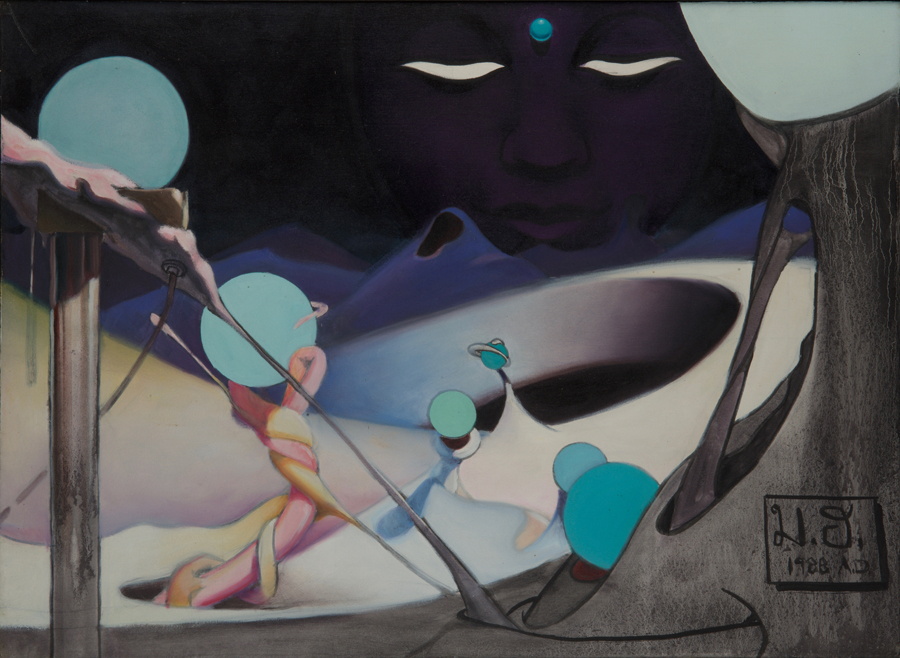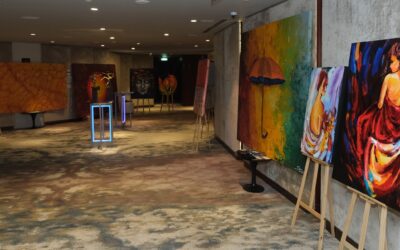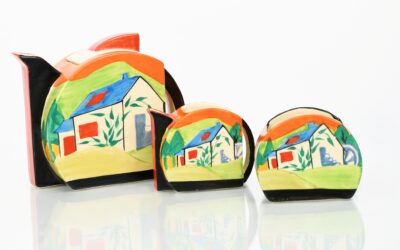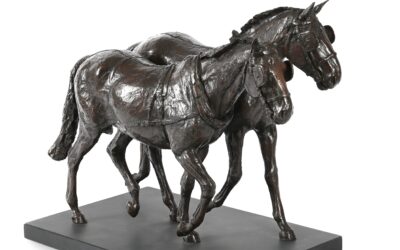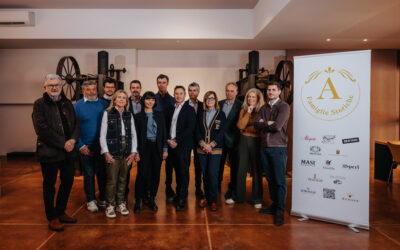Working in the realm of the surreal, Mark Hopkins explores the dynamism of life in the 21st century. Combining imagery from past experiences, popular culture and esotericism he creates a body of work that serves to both observe and critique modern culture while illuminating the mysteries that unite humanity and give access to deeper levels of insight into how we perceive ‘reality’.
Mark is both classically trained and self-taught. He has studied the figure and portraiture to hone his skills and translate realism in life into the surreal images he creates. Mark sees himself as a ‘universal citizen’ seeking what is common in all of humanity and what is exciting in the variety of religions, cultures, and traditions of the world.
Hollow_Chest_And-Androgyne
What’s your artistic background?
I was born in Poughkeepsie, in upstate New York. I went off to Minnesota to study art at St. Olaf college and got my degree in 1981. After graduating I moved to Minneapolis where I painted scenery for The famous Tyrone Guthrie Theater and for the Minnesota opera while freelancing as a muralist, portraitist and interior designer. In 1987 I felt I needed a major change in my life and moved to Chiang Mai, Thailand. For a while I owned a cabaret business called The Six-Pole House located in a 100+-year-old Chinese shop-house which was a perfect venue to promote the work of contemporary artists, poets, and musicians. I had a dream studio on the upper floor where I developed my early style, inspired by the cultural, social, and tropical environment that surrounded me.
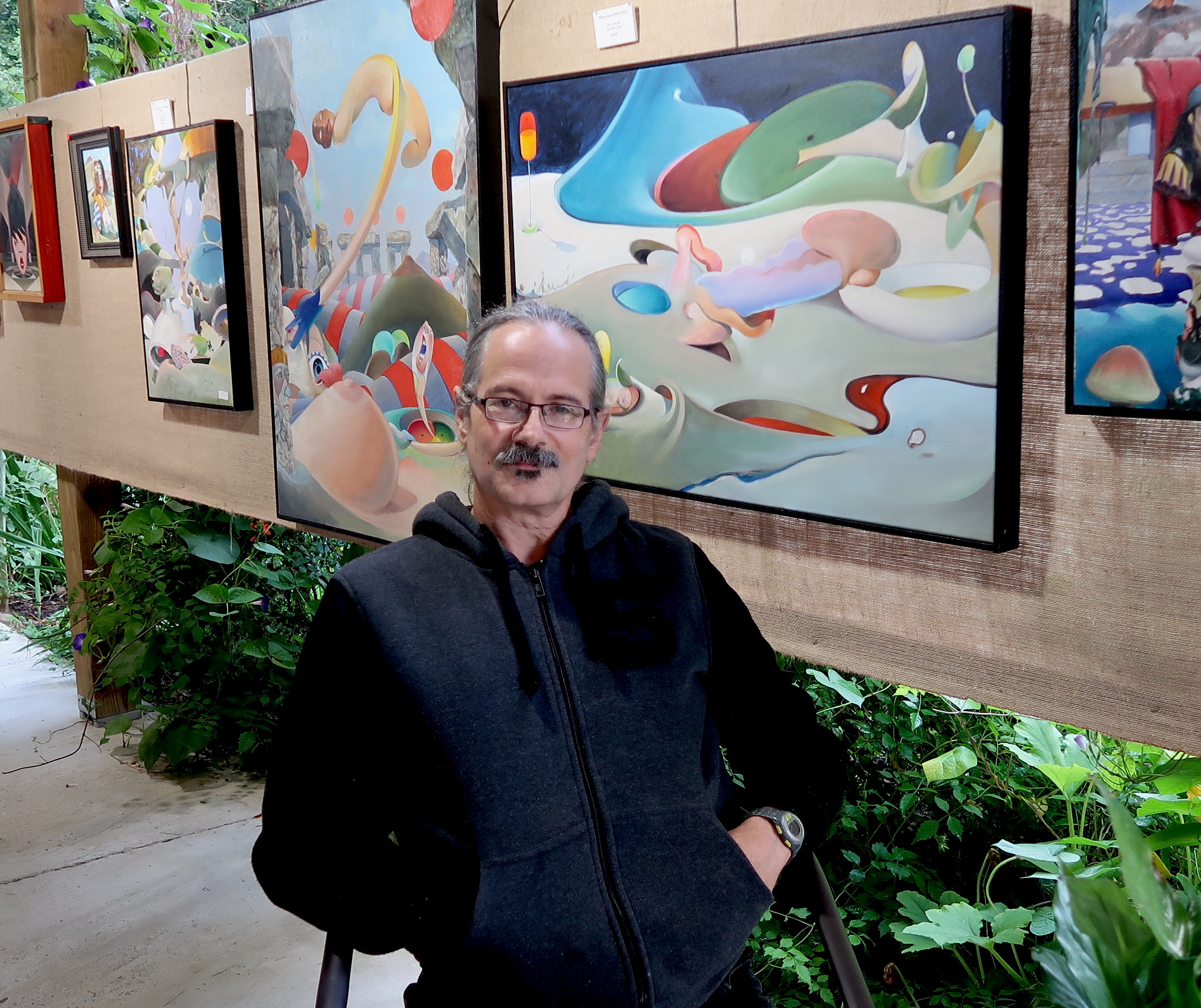
After selling The 6-Pole House I stayed on in Chiang Mai to paint a major body of work which included my ‘Great Atomic Chedi’ series. In the ensuing years I traveled around the region, including to Burma, Indonesia, and Vietnam, seeing amazing wonders such as Borobudur and Bagan. I had an opportunity to make connections with some truly talented artists and musicians who have had a profound influence on me. And, of course, the color, the styles of art, the traditional forms and ways of life throughout Asia continue to inspire my creative process.
In 1995 I moved to Bali where I was illustrating books on the architecture, culture, and natural beauty of Asia. I eventually started a business providing graphic design and mural decorations for companies around the region. Then, in 1997, I moved my business to Singapore and expanded into other types of art services – creating artistic properties for events, restoring art, and painting portraits for prominent families on the Island. In 1998 I met my wife and we moved to the US in 1999. Since then, I have been working as a muralist, portraitist, and art restorer while also painting personal works in my studio.
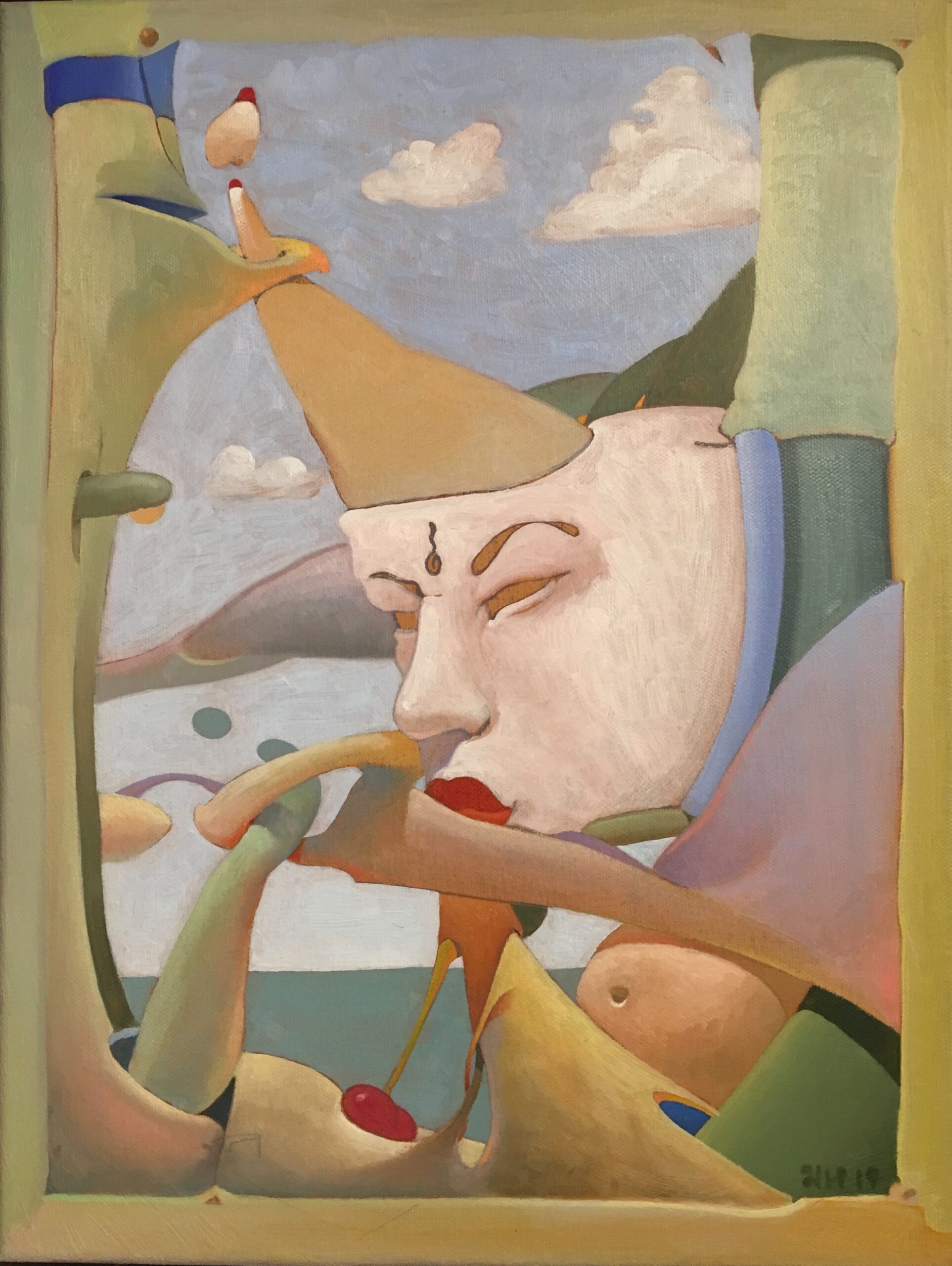
Pure Land Escape
What’s integral to the work of an artist?
For me, it is essential to seek the widest range of life experiences possible – especially when young. And one must study and learn intensely throughout life. Being skillful in the craft of art is essential as is developing concepts/ideas underlying one’s art as thoroughly as possible. It is also important to be constantly engaged in the translation that is art: from personal experience into ideas and then into form. The result will be work that is honest, engaging and fresh – even into an artist’s late years. Think Monet or Picasso.
What role does the artist have in society?
Artists sacrifice a lot to have the time and opportunities that allow them to observe, contemplate and reflect on the world – all necessary processes for generating art. The artist’s role is to present their insights for the benefit of the culture in one or more of the following ways:
- To illuminate the pleasure, sensuality, and beauty of the world. Van Gogh’s work is a classic example of this.
- To provide insight into aesthetics, existence, religion, meaning of life, etc. For example: Egon Schiele painted psychosis and lust, Worhol and Duchamp illuminated changes in the role of art in society, Mondrian painted the golden ratio, etc. The artist gives us glimpses into our own selves and our existence as humans that are invaluable. We gain deep understanding of our own humanity through the lens of the artist.
- To give commentary on all aspects of life including difficult topics like war or politics. Goya’s ‘Disasters of War’ is an example as is Picasso’s ‘Guernica’. The arts are able to tackle subjects that general society cannot. This is an important role to play in times of social and cultural change.
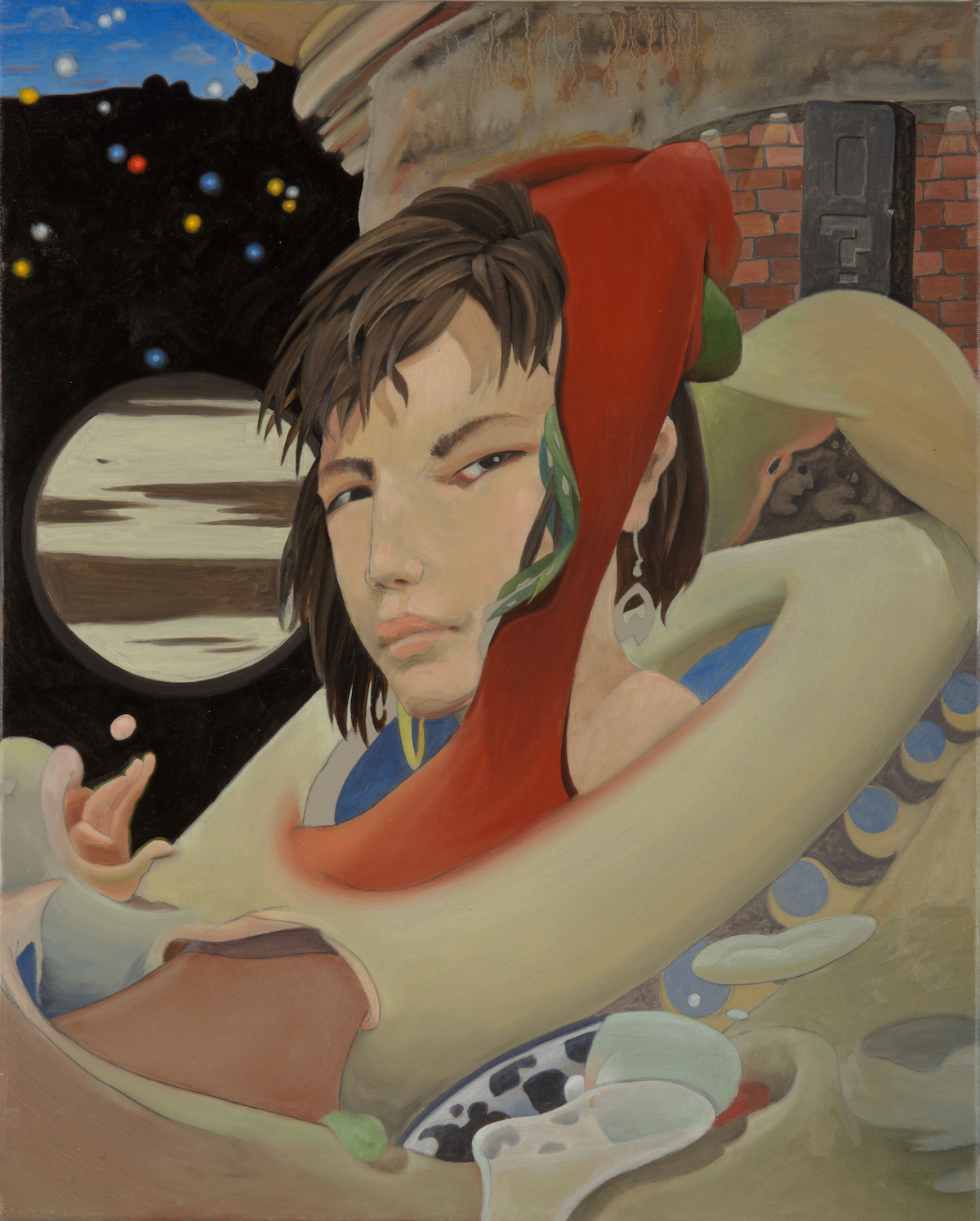
Medusa At The Mall
What art do you most identify with?
I identify with art that thinks and that feels deeply. Van Gogh, Rembrandt, Oldenburg, Escher, Turner, Basquiat and others express a deep insight to the world around them which appeals to me. My artistic sensibilities are similar. I travel extensively to gather ideas and stimulate thoughts. I then isolate myself into retreat where I can work on ideas and emotions deeply and then sketch them out to be incorporated into paintings. For me, the best artists draw from thoughtful responses to life’s experiences.
What themes do you pursue?
The issues that arise from living in a modern and changing world are among the prominent themes I pursue in my work. We are in an extraordinarily dynamic period in history where all aspects of life seem to be in flux. My work addresses this in two ways: in part, it can take a person out of ‘the comfort zone’ and into ‘Alice-In-Wonderland’ spaces where what was normal has morphed into altered realities. The other is to include visual elements that suggest the existential questions that arise from today’s changing world: Why are we here? What should life be about? Are we evolving into a new form – and is this desirable?
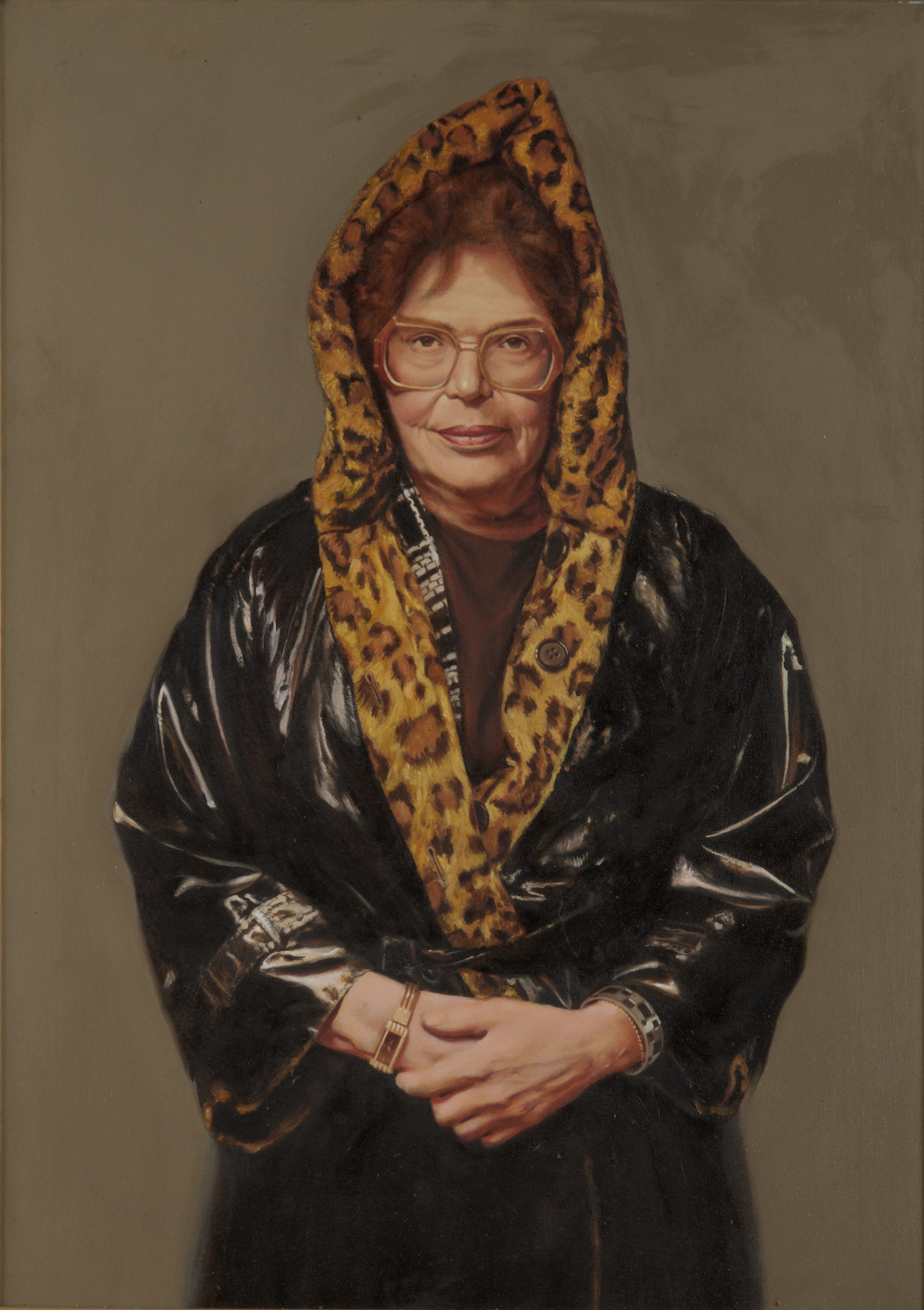
LoGiudice Portrait
Mystery is another theme. Seeking to understand the mysterious is an endless course of learning throughout one’s life. Esotericism, the unconscious mind, plus the classic spiritual and philosophical questions of life’s origins, death, etc. are ideas I often grapple with in my work. Sacred geometry also features in my work as a structure that underlies natural form – be it the smallest atom or the grandest galaxy. It is also found within the myriad forms of nature such as sunflowers, rock crystals, and DNA. The world’s great architecture such as Chartes in Europe, the pyramids at Giza in Egypt, and in sacred places throughout the world – including many in Asia – employ sacred geometry heavily. Thus I am inspired to use sacred proportions to create harmonious compositions as well as providing an extra layer of symbolism in my work.
Another theme is humor. There are visual puns in many of my paintings if you look for them.
What’s your favourite art work?
Probably Rembrandt’s ‘Death Of Lucretia’ in the Walker Museum in Minneapolis. It’s a scene of Lucretia who has decided to take her life after being violated by Tarquin. She is sitting on her bed… or death-bed. She has just drawn a knife from her bosom and sits there as her life-force ebbs away in growing stain of blood on her pure white gown. In her face is a resolute sadness painted by Rembrandt with exquisite sensitivity. In viewing his portrayal of Lucretia one can imagine the intense grief of that moment. The painting moves me deeply 360 years after it was painted. It is a pinnacle of artistic expression. By the way… I also love the playful ingenuity of Masami Taraokas ‘Sushi Ghost Tales’, and The Kailasa Temple in Ellora is one of my favorite examples of architectural mastery.
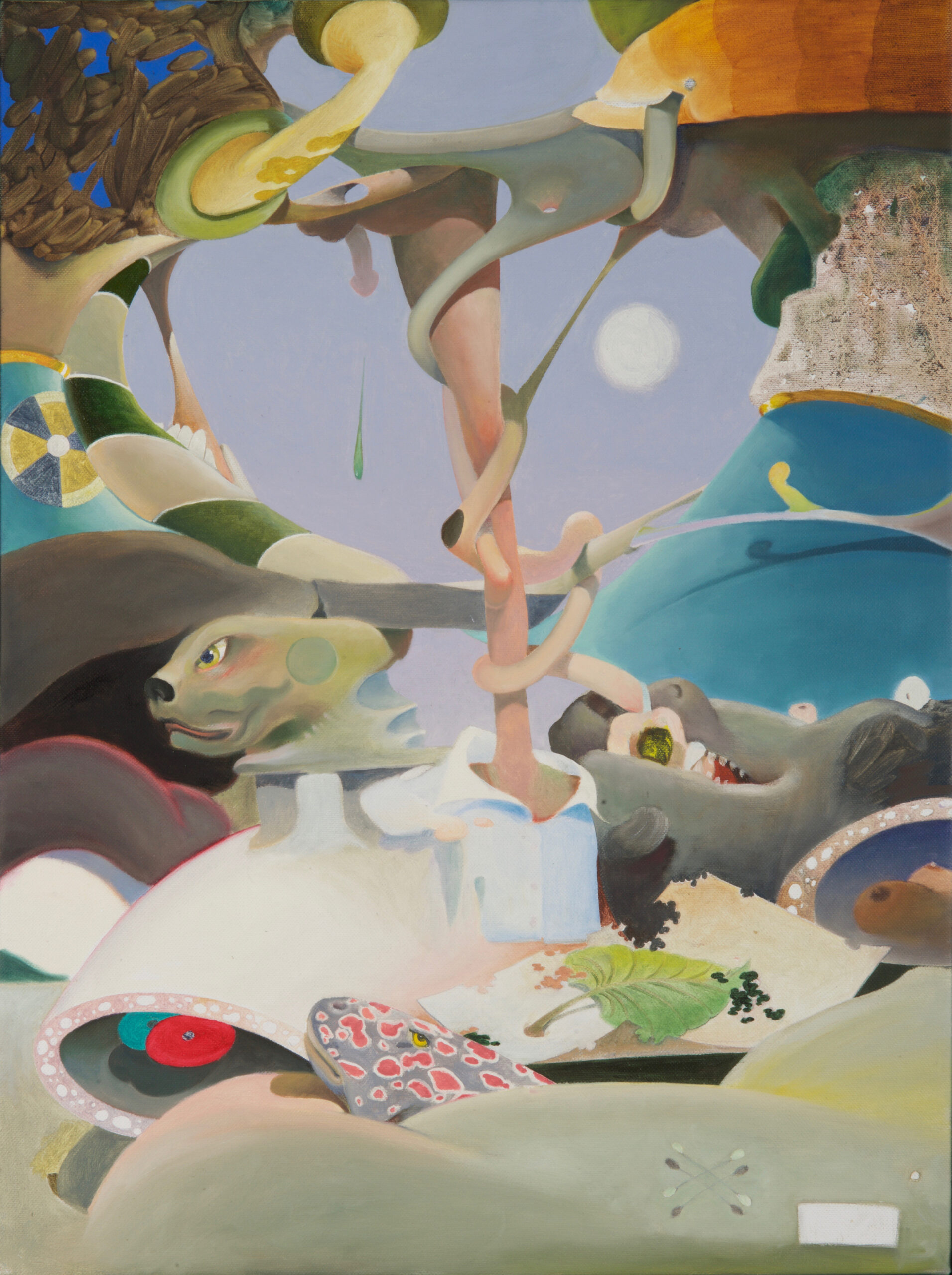
I Cant Get Used To This Lifestyle
Describe a real-life situation that inspired you?
When I was first living in Thailand I took a retreat into a 700-year-old monastery for seven days. It was the first time I had experienced meditation and the stillness it brings to the mind and spirit. It inspired a painting called ‘The Eight-Fold Path’. Life in New York is so busy and noisy. The tranquility of the experience left a deep impression on me and many of my works convey this quietude.
What jobs have you done other than being an artist?
My work through the years has been quite diverse – from working in the film industry; to making and painting scenery for the theater; to building houses; to financial investing. Lately I have focused on exotic restoration projects including the repair of other artist’s work that has been damaged.
Why art?
Why breathe? It is my nature to create art.
What is an artistic outlook on life?
My artistic outlook is to be open, observant and ready. Picasso said something like this: ” Inspiration exists… but it has to find you working”. One must have the ready skills to create. One must have accumulated the ideas and forms from which one’s art will flow. One must study, think or contemplate, sketch, write, and live in a way that gives space for art to occur. These are the preparations that are necessary for work to flow. My outlook is to always be ready for art to happen.
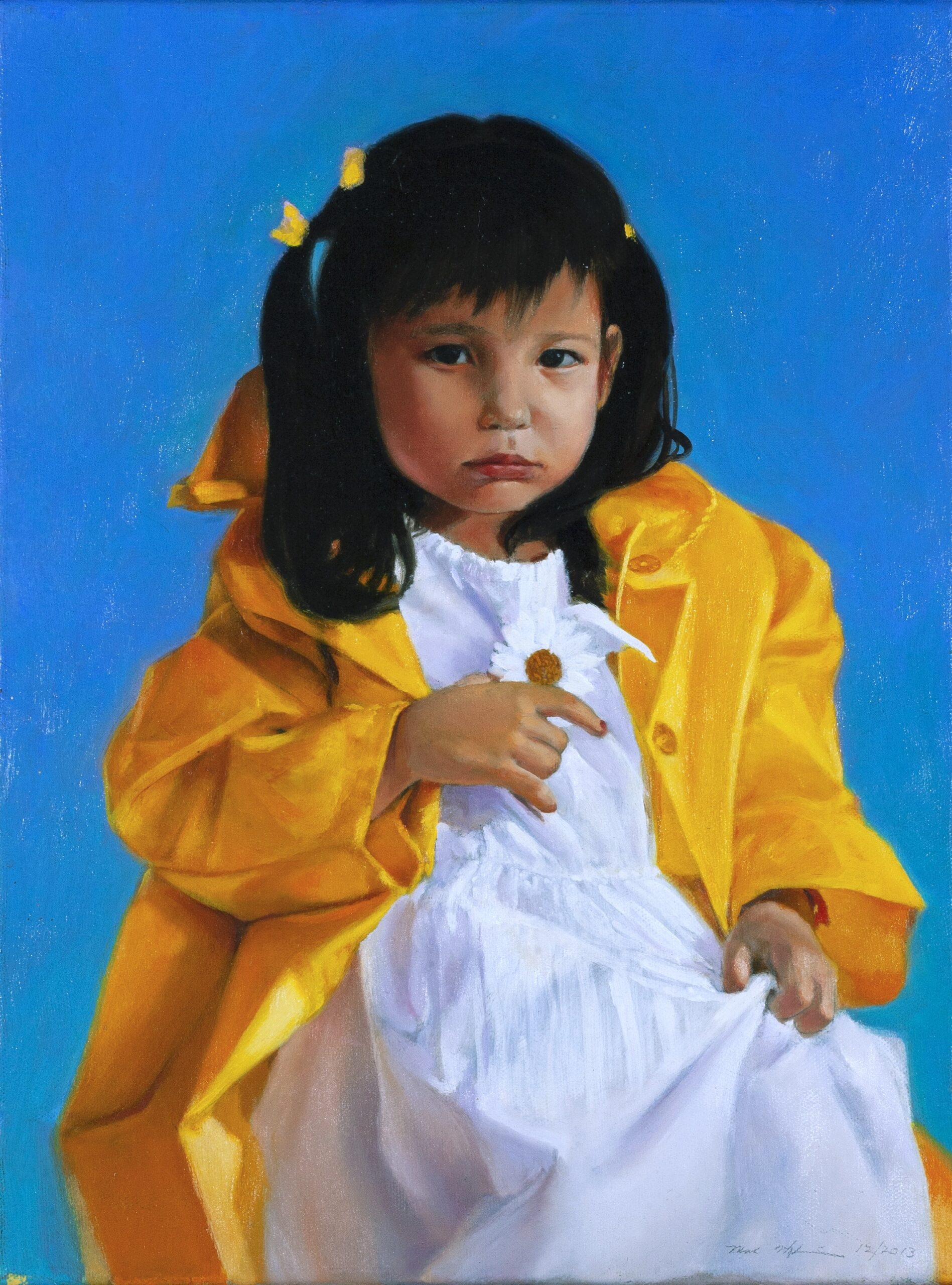
Girl In Yellow
What memorable responses have you had to your work?
Last year I hung a piece featuring androgyny and on how alienation sometimes converts into confidence in the human experience. I saw many young women in deep thought as they stood in front of that painting. They spoke of the great beauty they felt and of the way the painting gave them a sense of peace and power in being themselves.
The response was very pronounced.
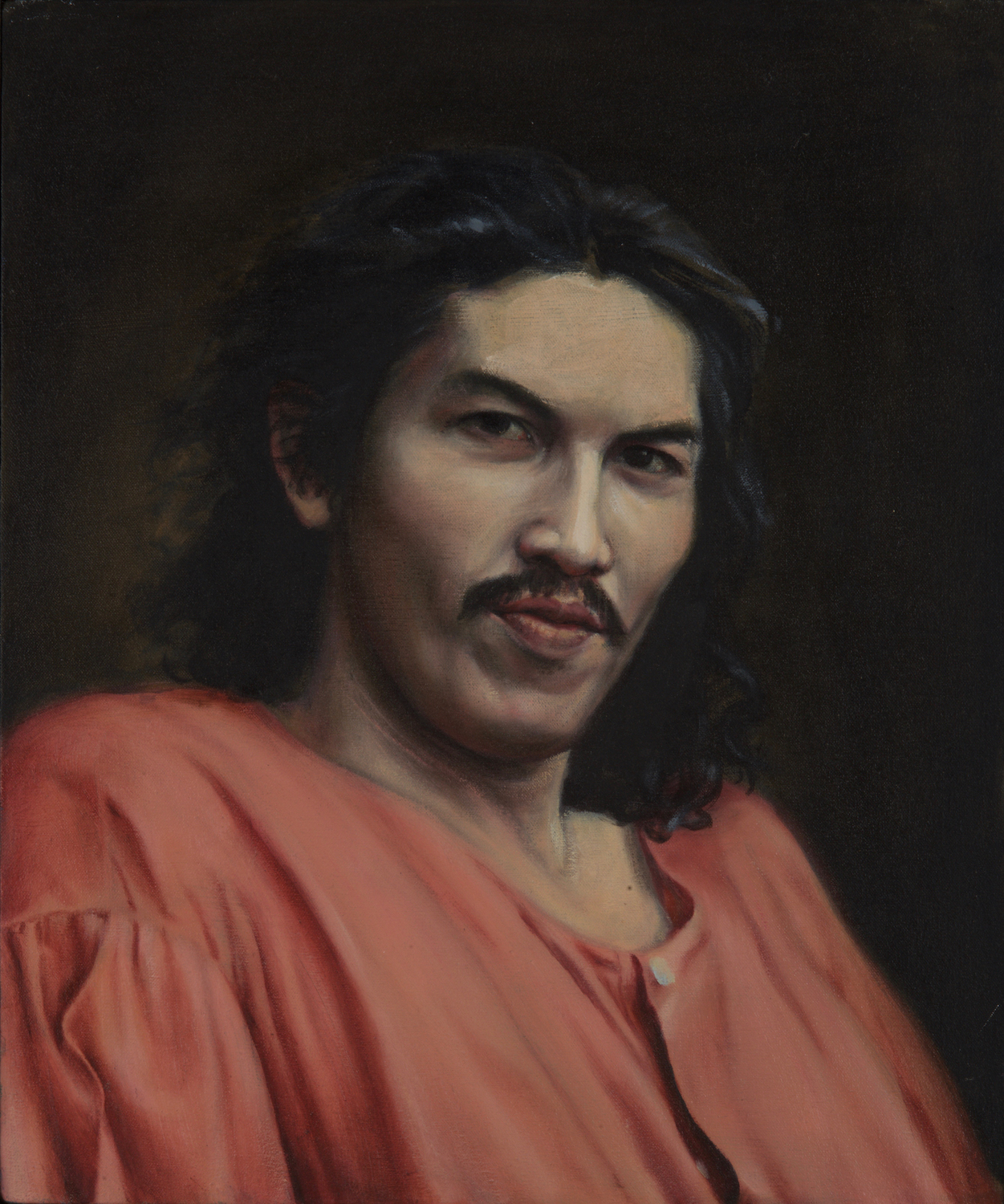
Tuk Portrait
What food, drink, song inspires you?
Intense flavors are a requirement for me. For food it’s rendang from Indonesia, a good sharp cheddar from England, babaganouj, or a good vindaloo. Alcohol must be rich and deep like Islay malt whisky, a good Aussie shiraz, Greek ouzo/metaxa, a hopped up IPA beer, etc. Life is too short to consume anything bland.
Is the artistic life lonely? What do you do to counteract it?
It can be crushingly lonely. One way to counteract it is to let the loneliness out in the work. Another is to go out sketching or to sit in a good coffee shop and work out ideas for new paintings. Another is to seek out good music and good social places to go and meet people. These help bring relief to the loneliest of times.
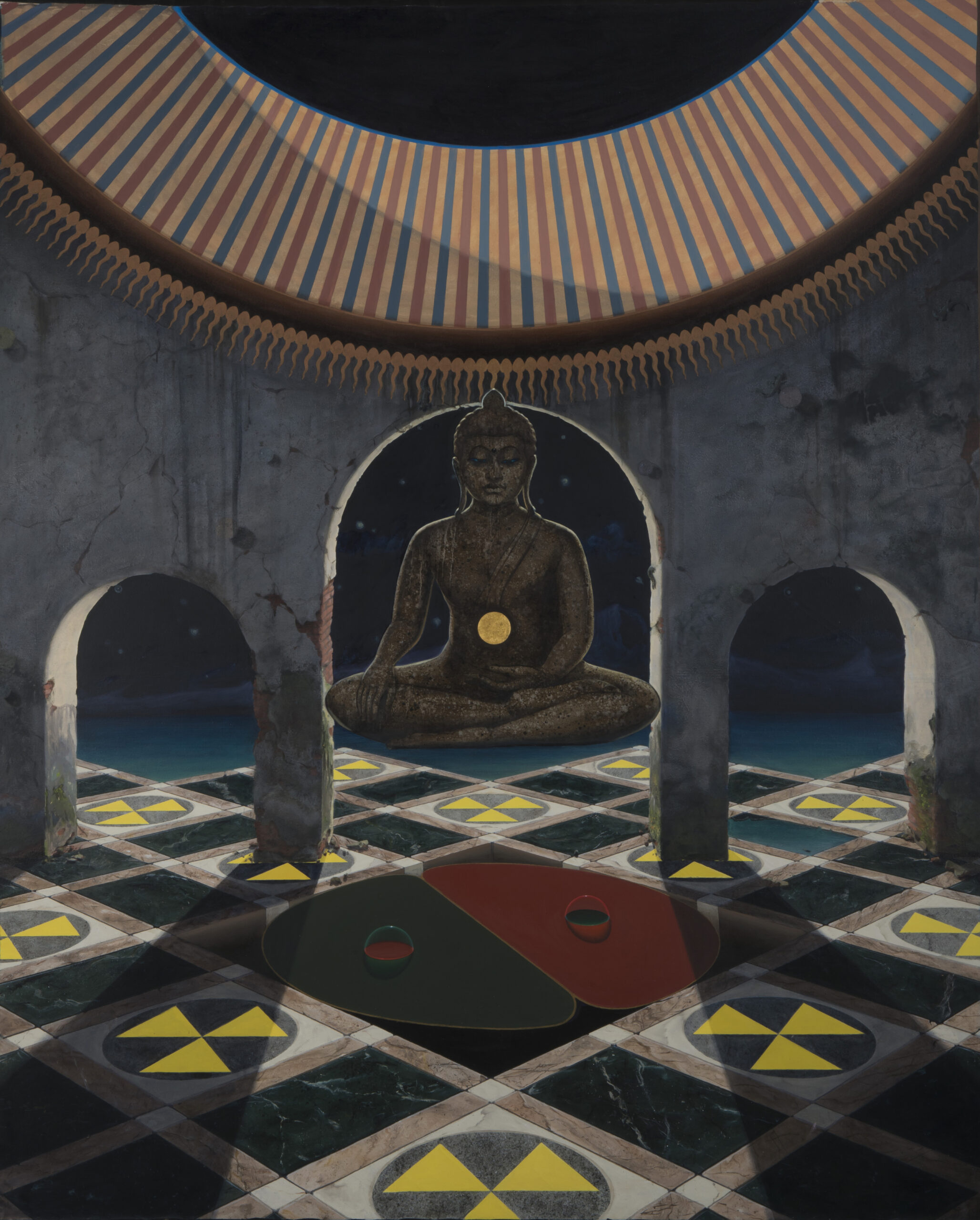
Concentrate 666
What do you dislike about the art world?
Arrogance, the focus on fame, and the commodification of culture. Art risks becoming meaningless due to these trends.
What do you dislike about your work?
Nothing. At my stage in life the issues that used to interfere with the realization of my vision in art are mostly resolved. Of course, individual paintings may have nagging flaws, but, like errant children they will work themselves out.
What do you like about your work?
I like that my ideas I wish to express in my work have matured and that I possess the skill with which to realize them. I appreciate that of late people have found my work to be both pleasing and interesting.
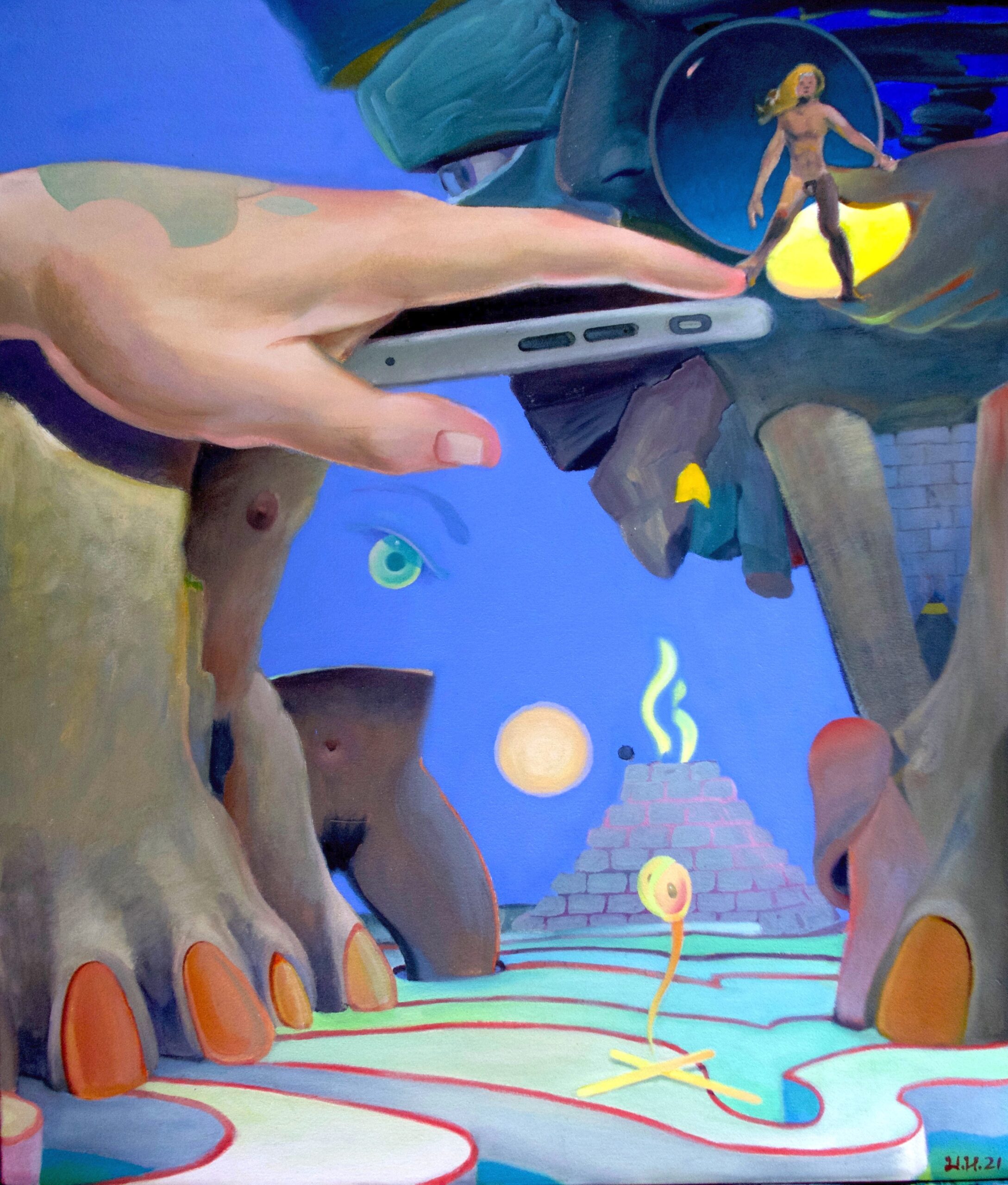
The Apple The Egg and The Creator
Should art be funded?
I think so, but I worry that those who fund art may put pressure on artists to conform to a narrowed range of ideas or to eschew controversy. Society should employ funding as a great way to support more conventional artists, but those dealing with fringe ideas should try to support themselves in order to remain independent. It’s what I have always done.
What is your dream project?
The dream is to have lots of time in the studio to fully focus on art. I do fantasize on going to Florence for a few weeks and setting up an easel in a piazza to draw people’s portraits. That would be fun.
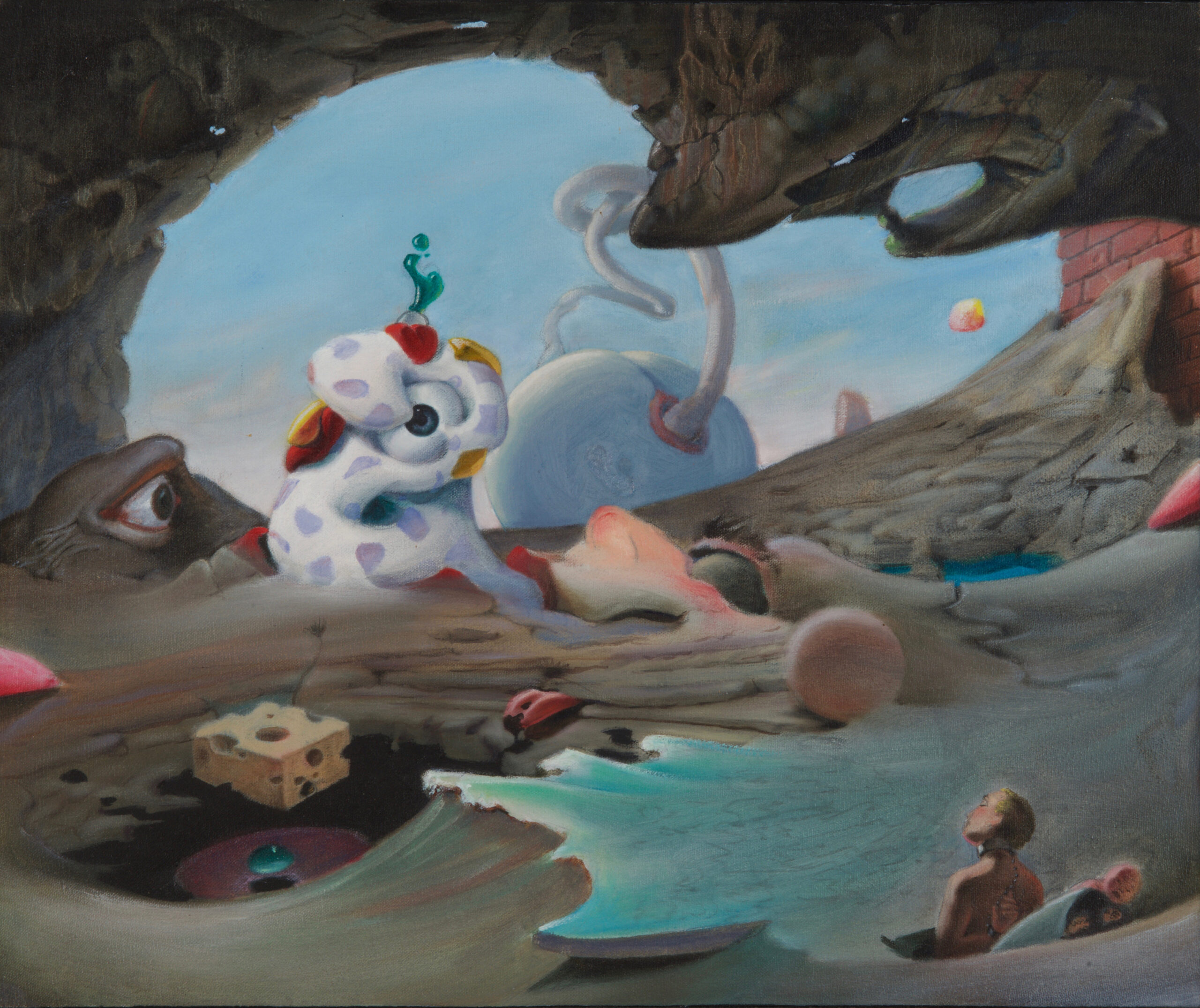
Surreal 95
Name three artists you’d like to be compared to.
There is only one: Salvadore Dali.
Favourite or most inspirational place?
Bali is a truly inspirational place. It is exquisitely beautiful, the culture generates artists of all kinds and they create work constantly. It feels very natural to create art while there. with Giza in Egypt a close second.
What’s the best piece of advice you’ve been given?
“Conquer the small.” Art can be overwhelming. Take on small projects until you have built the experience to take on the big ones. Many fail when biting off more than they can chew.
Professionally, what’s your goal?
I have reached all my professional goals except one (my least favorite) – on which I am now focused; the effective marketing of my work.
Future plans?
To always keep painting… and traveling. Peru, India, Cambodia, and Iceland are on the list.


